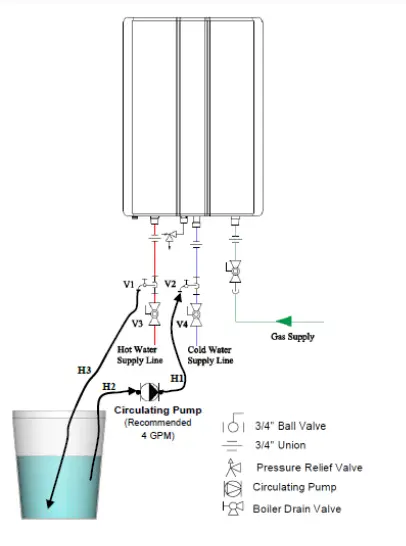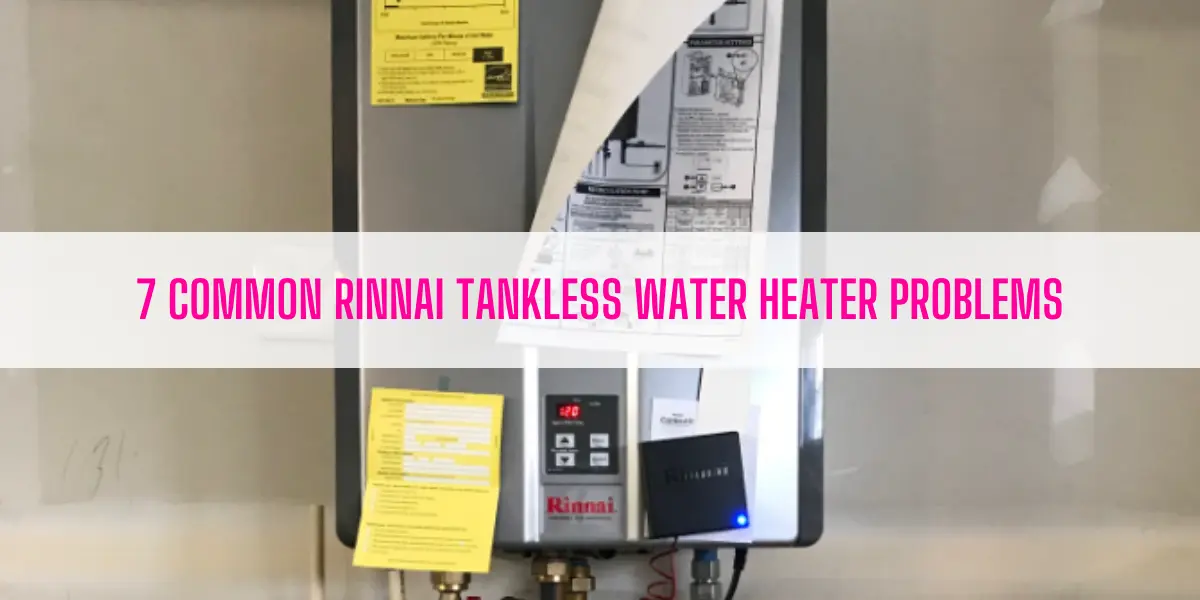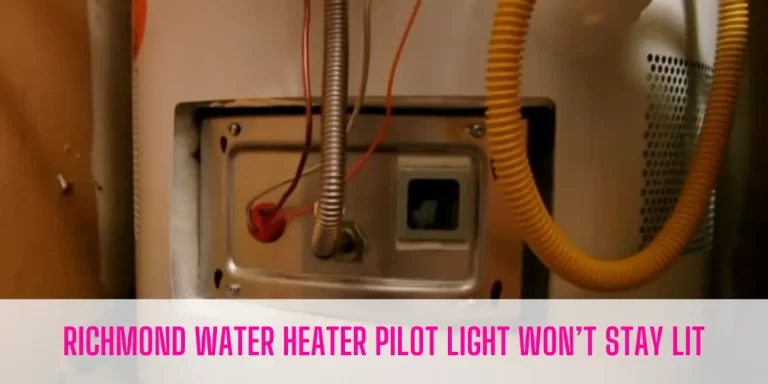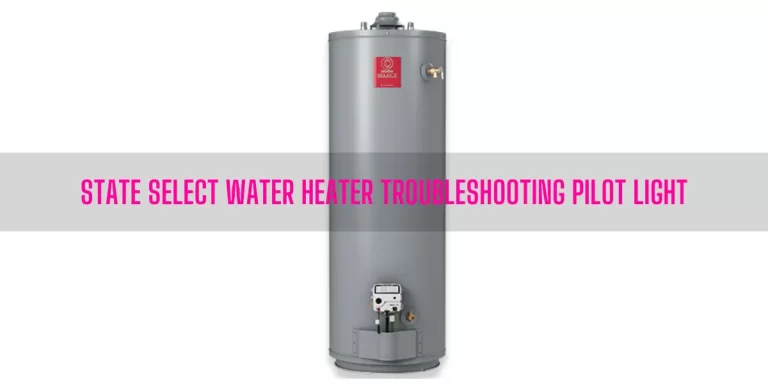7 Common Rinnai Tankless Water Heater Problems
Every electric appliance starts malfunctioning over time. And your Rinnai tankless water heater is not an exception to that. Today or tomorrow, you will experience or go through these common Rinnai tankless water heater problems:
- Water heater isn’t turning on
- No hot water or insufficient hot water
- No water coming out
- Ignition issue
- Water heater is too hot
- Water heater goes cold
- Problem with gas valve
- And so on
Today’s guide will break down each water heater issue so that you can solve those problems by yourself. As a result, you can save both money and time while getting the hot water in time.
Without further ado, let’s dive in.
Rinnai Tankless Water Heater Problems [7 Easy Solutions]
Let’s troubleshoot the most common tankless water heater issues and fix them.
01. Unit Isn’t Turning On
Your Rheem tankless water heater won’t turn on if it gets no electric power. If the electric outlet of your tankless water heater is at fault, the unit will not get the power it needs to turn on.
Besides, plugging the unit into an improper grounded outlet causes the water heater to not come on.
Nonetheless, blown-out fuses, damaged wiring harness, and bad PC board are other caveats that prevent the unit from turning on.
How To Fix:
Begin with testing the electric outlet you use to connect the water heater. Just unplug the unit and plug any appliances to verify whether the outlet is functioning or not. Also, make sure you plug the water heater into a properly grounded outlet that delivers 120 VAC, 60Hz of electricity.
Next, take your eyes into the two fuses you can find in the middle of the wiring harness. Visually inspect those fuses to see whether they get blown out or not. It would be best if you call a certified electrician to test both the fuses and the wiring harness. Replace both fuses and wiring harness if needed.
Lastly, test the PC board electrically. Regarding this, disconnect everything from the control board except the wiring coming out of the secondary side of the transformer. If there is no power at the terminals going to the wall-mounted controller, it’s the bad PC board.
In this case, get a new PC board and set it up. Set your new PC board following the same settings of the Dip Switch. Otherwise, it will be better to call a professional to install the PC board for you.
02. No Hot Water
The Rinnai tankless water heater will deliver no hot water if:
- You forget to plug the unit into the electrical outlet or the circuit breaker may get tripped.
- Set the water temperature too low.
- Tankless water heater may exceed its usage or demand.
- There may be too low flow rate.
- Air intake or exhaust vents may get clogged.
How To Fix:
First off, ensure whether you plug the power cord to a standard 120V electric outlet or not. If not, plug the water heater into the outlet. Don’t forget to inspect the main electrical panel and see whether the breaker for the water heater gets tripped or not. Flip the circuit breaker if it gets tripped.
Secondly, take a look at the temperature control panel. You may set the water temperature to the lowest setting. Setting the temperature at 120 degrees may even sometimes fail to meet your demand. So, increase the temperature to 125 degrees F to see if it can fulfill your comfort level.
Thirdly, you will get insufficient hot water if the unit exceeds the usage demand. It actually happens when you run too many appliances at once. For example, if you run dishwashers and load it with too many clothes and operate the showers at the same time, it will quicken your unit to reach its limits.
Just turn on the water heater at a time while other appliances will be shut off. If your demand is high, install two or three more tankless units and attach them in parallel. You can also install separate tankless water heaters for each appliance.
Next, measure the water flow rate. A tankless water heater requires a minimum of water flow per second to heat the water. If the water flow is too low, the unit fails to warm the water. So, increasing the water flow will be a simple fix to this issue.
Lastly, inspect both air intake and exhaust vents for a clog. If you find any blockage there, release them. Don’t hesitate to hire a trained plumber if you don’t know how to clean the air intake and exhaust vent systems.
03. No Water Coming Out
No water comes out of your tankless water heater! Then, a clogged nipple on the hot water outlet is the culprit behind this. What happens in this case is- the pressure from an open faucet can’t get into the unit to push the water out from the drain. Consequently, water can’t come out of the unit.
Besides, a completely clogged up unit can also prevent the water from coming out. The entire unit will get clogged if you fail to flush the unit correctly.
How To Fix:
Replacing the blocked nipple on the hot water outlet will solve the problem. I suggest you call a certified plumber to replace the nipple and the connection pipe. Turns out, flushing the unit improperly can block the water heater. If you want to learn how to flush the Rinnai tankless water heater properly, check this tutorial:
04. No Ignition
Ignition failure is another common Rinnai Tankless water heater problem. If there is an issue with the ignition, the unit will let you know by throwing the error code 11. The following reasons are responsible for ignition failure:
- Gas supply is turned off at the unit, gas meter, and gas tank
- Feeding the unit with wrong gas type
- Incorrect inlet gas pressure
- Air in the gas lines
- Flame rod wire gets damaged
- Defective igniter
How To Fix:
Ensure you fix all the issues I mentioned earlier. If you want to know more details, check this article on Rinnai Tankless Water Heater Code 11. In that guide, I broke down everything to fix the ignition issue.
05. Water Heater Is Too Hot
Rinnai Tankless Water Heater will get too hot if you overload the unit by running too many appliances at once. Apart from this, the following reasons can also cause the unit to get excessively hot:
- Dirt, debris, or other foreign materials may be present in the combustion chamber or the exhaust piping.
- Heat exchanger fins get restricted by dirt and dust.
- Defective gas valve assembly
How To Fix:
Firstly, never overload the water heater by running multiple appliances at onces. In this case, turn off the unit and other appliances. Then, let the water heater cool down. Just turn on the water heater only when needed. If you need to use more hot water, install several units for specific appliances like dishwashers.
Secondly, inspect the combustion chamber and the exhaust piping. If there is any blockage, release them.
Thirdly, check the heat exchanger fins for restriction. The following cleaning procedure will help you get rid of debris buildup from heat exchanger:

1. Press the on/off button on the controller to turn the unit off.
2. Disconnect the water heater from the electric connection.
3. Close both shut-off valves on the hot water and cold water lines.
4. Attach a pump outlet hose to the cold water line at the service valve.
5. Attach a drain hose to the hot water line at the service valve.
6. Pour 4 gallons of undiluted white vinegar into a bucket.
7. Place the both ends of the hoses to the pump inlet into the cleaning solution.
8. Now, open both service valves on the hot water and the cold water lines.
9. Turn on the circulating pump and let the vinegar circulate through the unit for at least an hour at a rate of 4 gallons per minute.
10. Turn off the circulating pump
11. Wash the vinegar from the unit by following the below steps:
- Pull out the free end of the drain hose from the bucket and place it outside or in a sink.
- Turn off the service valve (V2) and turn on the shut-off valve (V4).
- Let the water drain from the unit for five minutes.
- Turn off the shut-off valve (V4). Pull out the in-line filter at the cold water inlet and remove any residue. Then, replace the filter and open the shut-off valve.
- Shut off the service valve (V1) and open the shut-off valve (V3).
12. Detach all the hoses from the unit.
13. Turn on the electric power to the unit.
06. Water Heater Goes Cold
It’s normal you will feel the unit cool to touch if the heat pump and the unit itself are in the rest state. The water heater goes cold when it’s not heating water. But it will be a pain in your neck if the unit goes cold after operating it for a few minutes. Basically, your Rinnai tankless water heater goes cold due to the following reasons:
- You size the gas line improperly
- Filthy water filter in the cold water inlet
- Heat exchanger gets clogged
- Water heater goes cold, then hot, and goes cold again
How To Fix:
If the unit is in the rest mode, the water heater feels cold. So, there is nothing to worry about. But if the water heater goes cold because of the mentioned issues, there is a problem with the unit. I made up my mind to write a complete guide on What Causes the Rinnai Tankless Water Heater To Go Cold. And it will be published next Sunday. So, keep waiting till then.
07. Gas Valve Issue
The tankless unit will throw the error code 52 if there is any issue with the gas valve. Here are some reasons that can cause gas valve problems:
- Flame rod or its wiring gets damaged
- Issue with gas solenoid valve
- Defective gas valve assembly
How To Fix:
Begin with inspecting the flame rod and its wiring. Replace or repair both flame rod and flame rod wiring.
For a faulty gas valve assembly, I highly recommend you call Rinnai Technical Support for replacement. They will also help you fix the gas solenoid problems.
End-Note
Throughout this Rinnai tankless water heater troubleshooting guide, I broke down everything you need to know. So, follow every step I mentioned to detect the water heater problems and fix them. If you fail to identify the exact water heater issue, call a professional for help.

Eric Alvarez is the head of content on LilDutchUncle.Com. He is an HVAC guy based in El Paso, Texas, United States. He obtained his Bachelor of Science degree from the University Of Texas at El Paso. Years of experience in the HVAC field have taught him many lessons, not the least of which is that the value of quality and knowledge far exceeds any promised initial savings. He has a good standing reputation for superior skills in heating, air conditioning, hot water tanks, and indoor air quality systems.




![Rinnai Tankless Water Heater Not Getting Hot Enough [Solved]](https://lildutchuncle.com/wp-content/uploads/2022/09/Rinnai-Tankless-Water-Heater-Not-Getting-Hot-Enough-768x384.webp)
![Rheem Water Heater Keeps Turning Off [9 Reasons & Solutions]](https://lildutchuncle.com/wp-content/uploads/2022/09/Rheem-Water-Heater-Keeps-Turning-Off-768x384.webp)
![State Select Water Heater Troubleshooting [Complete Guide]](https://lildutchuncle.com/wp-content/uploads/2022/12/State-Select-Water-Heater-Troubleshooting-768x384.webp)
